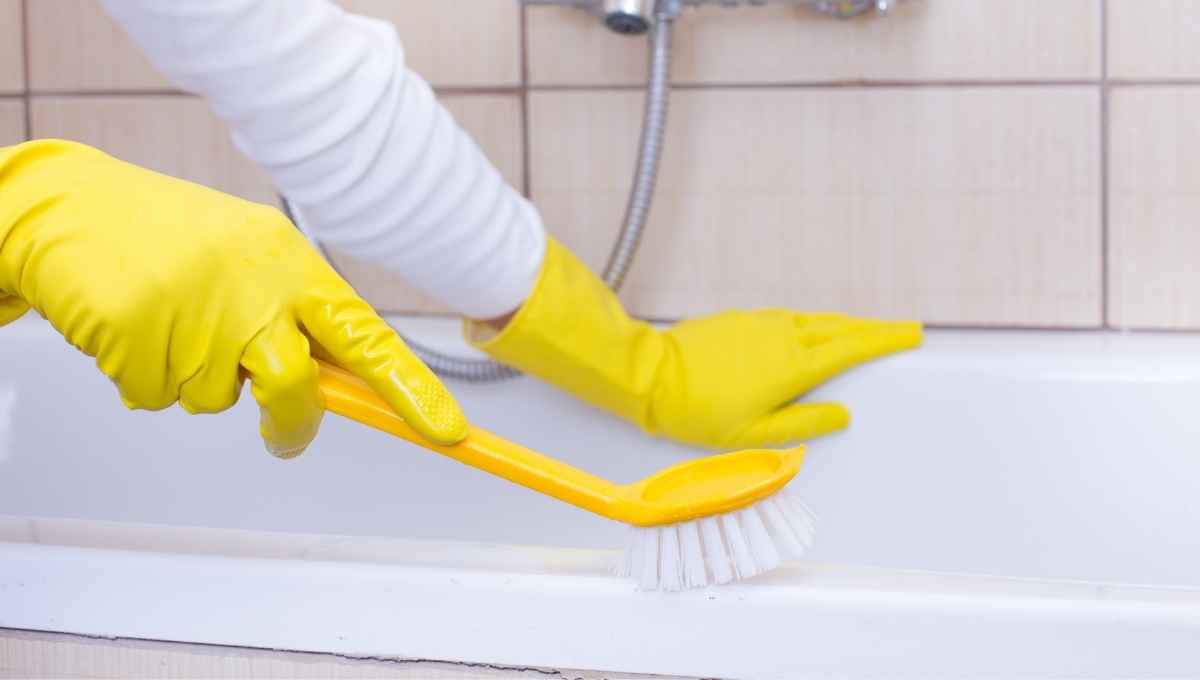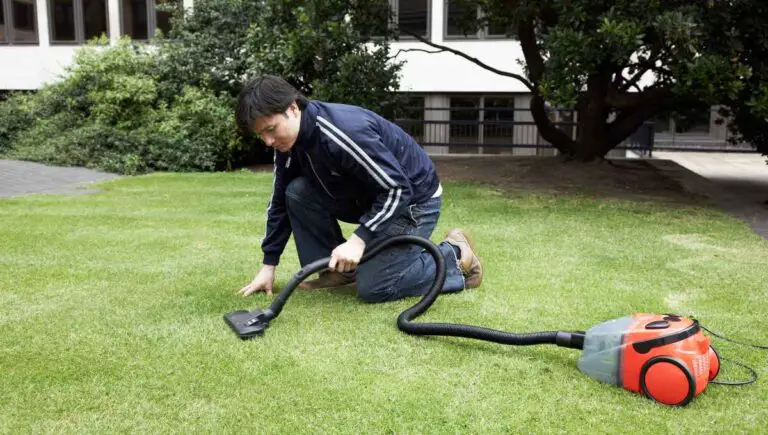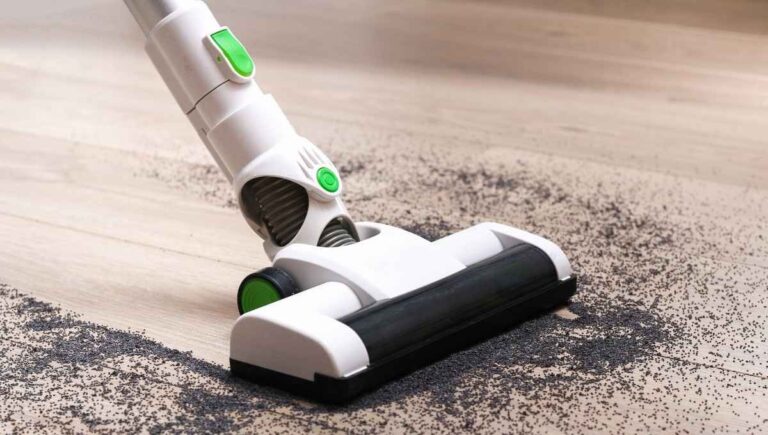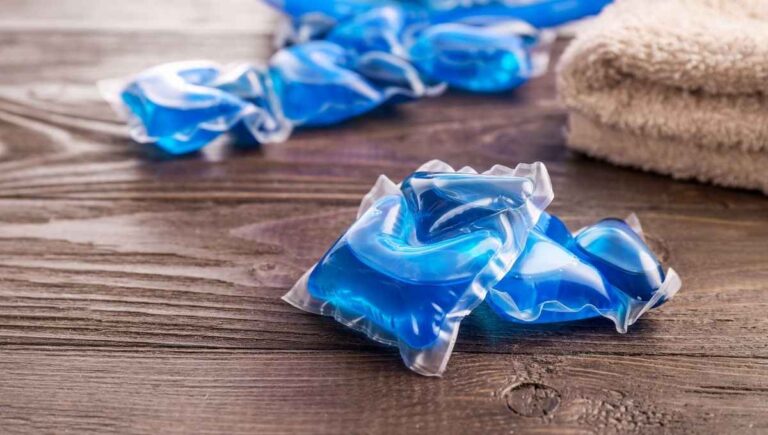How Do I Get My Bathtub White Again? (This Trick Worked)

Once your bathtub has turned an undesirable shade of yellow or pink, you are likely very eager to turn that bathtub white again. Unfortunately, this issue is very common since it’s caused by common bacteria and environmental issues. So, the question remains, how do you get your bathtub white again?
To get your bathtub white again, you should use a cleaning agent like hydrogen peroxide or vinegar when scrubbing the bathtub. But first, you have to identify what is causing the stain so you can effectively treat it and prevent it from happening again.
In order to remove each type of stain you have to know how to treat each one and to keep the stain from returning, you’ll need to know what’s causing the issue. We’ve covered both in this article.
This post contains affiliate links. This means Household Blogger may earn a commission should you make a purchase using any of our links. Please refer to our full affiliate disclosure policy for full details.
Here’s a Quick Pro Tip!
Thankfully, it is very possible to get your bathtub white again. The best way to do this is with powerful yet environmentally-friendly products.
Here are our top picks from Amazon:
1. CLR Calcium Lime and Rust Remover: This product comes from a woman-owned company and it is an environmentally friendly option compared to other CLR cleaners.
2. Essential Oxygen Hydrogen Peroxide 3%: This product also comes from an environmentally minded and woman-owned company. It comes with a spray bottle for easy application.
3. Dawn Platinum Powerwash Dish Spray: This product might be meant for dishes, but it cuts through grease and grime anywhere. The spray feature of this product makes the application to clean the tub much easier.
Cleaning Methods
Thankfully, you have options. There is a range of products and substances you can use to clean your tub to remove the stain concerns and help with the longevity of the life of your tub.
How Do You Clean a Bathtub?
There are many ways to clean a tub, but we really like using dawn dish soap and a plastic bristle broom. The soap cuts through any oil, dirt, and grime and the broom allows you to stand while cleaning rather than getting down on your knees.
However, if you are currently dealing with a stain or discoloration in your tub you should treat that first and then start with the soap for regular cleaning.
This can be done once every week safely, without harming the tub.
How Do You Clean a Bathtub Without Scrubbing?
You can use specific sprays designed for bathtubs that are gentle on your tub but still cut the dirt and grime. You can also use Dawn Dish Soap and a soft plastic bristled broom. You don’t have to scrub hard with the broom.
Dawn dish soap, just like for dishes, does a great job of cutting dirt and grime on the bathtub without any intense scrubbing.
The best way to use the dish soap is by doing the following:
- Squirt the dish soap on the most grime-filled spots
- Then with the wet broom push around the soap
- Let it sit for a few minutes, and then use the broom to rinse off the soap and greasy grime.
How Do You Whiten a Discolored Bathtub?
One way you can whiten a bathtub is a combination of UV light and vinegar, hydrogen peroxide (3%), baking soda, lemon water, or chlorine. All of these solutions need to be applied differently.
Each solution has a period of time it reacts with the stain and some other precautions are necessary for some solutions.
Here’s a breakdown of how best to use each whitening solution:
- Vinegar: Spray on the vinegar and let sit for 15 minutes. Then scrub with a soft sponge or brush. This works really well with yellow stains.
- Hydrogen Peroxide (3%): Spray this particular concentrate of Peroxide on any stained surface and wait for several minutes before scrubbing with a soft sponge or brush and rinsing. Peroxide works on most stains.
- Baking Soda: Sprinkle baking soda on the stain and wait 30 minutes before scrubbing with a toothbrush and rinsing. Repeat the process for the best results. This also works well on yellow stains.
- Lemon Water: Take a glass of hot water and mix with the juice of half a lemon. Pour onto the stained surface and let sit for 10 minutes. Sponge over the solution and then let it dry naturally. Lemon Water is also best for yellow stains.
- Chlorine: Handle with care and follow all safety instructions and protective wear while using Chlorine. Sprinkle some Chlorine on the stain and let sit for several minutes. Then use a damp brush to brush through the stain. Then rinse out the tub thoroughly.
How Do You Whiten a Yellow Fiberglass Tub?
The best cleaners to fight yellow stains on bathtubs are vinegar and baking soda. Vinegar needs to sit about 15 minutes on the stain before scrubbing with a gentle brush. Baking soda needs 30 minutes to sit on the stain before being scrubbed by a gentle brush.
You can repeat both vinegar and baking soda solutions for an even cleaner result. Both are gentle and natural cleaners.
How Do You Clean a Badly Stained Bathtub?
If the tub is badly stained in multiple areas rather than just one or two spots on the bottom of the tub, then it is best to use a sprayed solution. Hydrogen Peroxide is easily sprayed and effective against a multitude of stains.
Chlorine also is good for the majority of stains, but it is harder to apply than peroxide and is a less stable chemical.
It also requires you to wear goggles and gloves to handle. However, some cleaning solutions have a low percentage of chlorine at a stable level.
How Do You Fix a Discolored Bathtub?
You can fix a discolored bathtub if it’s stained. Hydrogen Peroxide 3% is the easiest and most versatile stain remover. If the enamel is coming off then the tub will need to be refinished.
Using a solution with Chlorine can help too, especially for pink stains. Chlorine is great at killing bacteria. If your tub is plastic UV light exposure could be the cause of the yellowing.
If that’s the case, simply reducing UV exposure will help along with Hydrogen Peroxide.
How Can I Make My Bathtub Look New?
You can clean off almost any stains by spraying Hydrogen Peroxide 3% on the tub and letting it sit for several minutes before then using a soft brush to scrub off the stains. To remove any soap scum or build-up you can use rubbing alcohol.
If this doesn’t make your tub look new, it might be time to either get a new tub or reglaze the tub with a tub reglazing paint, which comes in a variety of colors.
This is a thick paint that will cover your existing tub and last around 15 years.
How Do You Remove Calcium Deposits From a Bathtub?
You can use vinegar to remove calcium from a bathtub. Spray the vinegar onto the calcium deposits and let sit for three hours before scrubbing and rinsing. You can also make a paste mixture of vinegar and baking soda and scrub with that.
Vinegar and baking soda are also safer choices. There are products like CLR cleaner that will remove calcium build-up, but it’s not good to use often because some CLR products are harmful over time.
Vinegar and baking soda are harmless.
How Do You Remove Yellow Stains From Porcelain Tubs?
Yellow stains are removed with various cleaning solutions including hydrogen peroxide 3%, lemon water, Chlorine, baking soda, and vinegar. Vinegar is most commonly used for yellow stains.
Vinegar is probably the simplest solution because it just needs to be sprayed on the stain and let sit for 15 minutes before rinsing.
Other cleaning solutions have one or more steps to go through. Some cleaners also take longer to break up the stain.
Why Your Bathtub Turned Yellow
Some bathtubs get yellow stains, but some actually turn yellow for different reasons. In this section, we will look at the causes of yellow stains and discoloration.
Why Did My Tub Turn Yellow After Bleaching?
Bleach can discolor your tub if it is mixed with acid. In other words, if you clean your tub with a different cleaner first and it leaves an acidic residue the reaction with the bleach can cause the tub to turn yellow.
If you have a plastic bathtub (often used in mobile homes) UV light (sunlight) is usually the culprit. Make sure to limit UV exposure if you know your tub is plastic.
You can reverse any yellowing with Hydrogen Peroxide 3% spray.
What Causes Yellow Stains in Bathtubs?
There are three main causes of yellow stains in bathtubs. One is humidity and water. If the tub is constantly wet. Another cause is an incompatible mix of cleaning products. The third is from bath products that leave a residue.
The best way to stop all of these stains, including damage from bathtub mats, is to keep the tub dry as much as possible.
Also, try not to mix cleaning products, and to clean up any spills or residue from soap or other bath products immediately after use.
Why Does My Water Leave Yellow Stains?
In humid climates, yellow stains caused by water are more likely because of the humidity, but water can also cause stains if it puddles up in your tub. The moisture can soak into the tub and many other surfaces. All water contains dirt and dust which causes the stain.
If you live in a humid climate, you can reduce the moisture in your bathroom by keeping the temperature at 72 and running a fan or opening a bathroom window.
Also, be sure to wipe up any water pooling in the tub or shower after each use.
Why Does My Water Leave Pink Stains?
Serratia marcescens is a bacteria that can cause pink stains in tubs and on shower curtains. It survives on dust particles and moisture. It needs very little else to survive. A lack of chlorine in the water system makes a difference as well because chlorine kills bacteria.
You might notice more pink stains when you leave windows open, or right after some construction. The reason is that, as a result, there is more dust, and the more dust there is the more Serratia there is.
Why Does My Water Leave Orange Stains?
Oxidized iron is usually what causes orange stains. It gets into the water supply from the pipes and is dissolved into the water. Then it collects in and around the bathtub. Orange stains could also be from the bacteria Serratia, but that is usually pink.
The best way to prevent orange stains is by towel drying the tub after use. You might also consider changing your pipes from metal to plastic.
Plastic pipes do not accumulate hard water particles, and they do not rust.
You might also enjoy our post on If You Can Move a Bathtub
Why Does My Water Leave Red Stains?
Red stains are caused by iron in the water supply. Bleaching the tub can make a red or orange stain worse because of the reaction between the bleach and the iron. You can instead use vinegar to remove the stain.
Two of the best ways to prevent a red stain is to dry the area after use. This way the hard water particles dissolved in the water won’t get a chance to settle into the tub.
If you have metal piping, you can replace it with plastic pipes to cut out rust.
Cleaning Products
For the majority of stains, there are a couple cleaning products good for nearly all issues. There are also some cleaning products that will not work and possibly worsen the stain.
What Is The Most Effective Tub Cleaner?
The most versatile tub cleaner is Hydrogen Peroxide 3%. This solution gets rid of the majority of stains, but it also doesn’t react against other cleaners as much as bleach or vinegar. It’s also easy to apply in spray form.
It’s best to get at least 3% because any lower and the strength is not enough to break down the tougher stains. You can buy 3% at hair supply stores as it is used in bleaching hair.
Just be sure you are not buying one that also contains oils.
What is The Best Cleaner for Hard Water Stains?
One of the best cleaners on the market is CLR which is a calcium, lime, and rust remover. Some CLR cleaners are safer and just as effective as harsher cleaners. Just be careful because the harsher CLR cleaners are harmful when rinsed into the water system.
Vinegar is also a great solution to clean off hard water stains. It dissolves calcium, iron, and other substances that build up causing hard water stains.
To get into the layers of the stains, use a mix of vinegar and baking soda and scrub that with a soft brush.
What is The Best Home Remedy to Clean Your Bathtub?
Vinegar is available in most households and is usually kept in the kitchen. Vinegar does a great job of breaking down and dissolving many substances that cause stains. You can also make a paste with baking soda. Be sure to mix the two right before applying.
You can also use lemon water that’s made with warm water and then cooled. Many families also have hydrogen peroxide in their houses, but the percentage might not be strong enough.
Make sure the peroxide is at least a 3% solution.
How Do I Make My Own Bathtub Cleaner?
When it comes to your own bathtub, you can dry off the tub with a towel after each use to limit the stains caused by the moisture and hard water. You can also clean the tub each week with Dawn dish soap and a soft-bristled broom.
If you keep it clean on a daily basis you shouldn’t have any issues with stains and have to tackle those later. Cleaning for stain prevention will be easier and it will prolong the life of your tub.
You might also enjoy our post on How Much It Costs to Fix a Cracked Bathtub
Prevention
You can prevent stains from happening in your tub if you learn about how the environment and cleaners affect the tub.
How Do You Prevent the Bathtub From Staining?
If you’ve already noticed what stains your tub is subject to, then you can prevent that specific stain, but for most stains, the water is the problem. Simply drying your tub with a towel and circulating the air in the bathroom will prevent most stains.
If you have a plastic tub, the sun will yellow your tub. To prevent that, use dark curtains in the room and leave the lights off when you are not in the room.
How Do You Prevent Well Water Stains?
To prevent well water stains, keep the tub dry so that the hard water can’t settle into the tub. Bathtubs are partially absorbent and when it absorbs the moisture it also absorbs the calcium, rust, and lime from the hard water.
Also, cleaning your tub once a week will help cut down on the build-up from substances often deposited by well water and hard water.
How Often Should I Clean My Bathtub?
You should clean your tub at least once every two weeks, or once every week. You should also wipe down your tub and tile after each use to keep it dry. The moisture can soak into the tub along with dust and hard water substances.
Keeping the bathroom well ventilated is also part of keeping it clean. If you keep the humidity and moisture under control then cleaning becomes much easier.
Then once every other week, spray it down with Peroxide or squirt some Dawn Dish Soap, scrub a little with a soft-bristled broom, and then rinse.
This way, you don’t have to spend an hour scrubbing on your knees.
Related Questions
How Do I Whiten My Toilet Bowl?
You can use a product with bleach in it. Many toilet bowl cleaners contain bleach. Chlorine products are good as well. If you are dealing with hard water stains and rust in your toilet it is best to either use CLR remover or vinegar.
The main issue with cleaning the toilet is that there is always water in the bowl. Using some solutions like hydrogen peroxide will be diluted too much to be effective.
It’s also harder to prevent stains because of the constant moisture. Using a cleaner in “cake” form can be helpful because it is constantly cleaning.
How Do I Whiten My Bathroom Sink?
Spray Hydrogen Peroxide 3% all over the sink and let it sit for 15 minutes before gently scrubbing the sink with a soft sponge or plastic bristled brush will help remove stains. Vinegar, baking soda, and lemon water will also help.
If it’s a pink stain Peroxide is best, but if it’s a yellow stain vinegar is best. If you notice hard water stains you can use vinegar or CLR cleaner.
If you use CLR cleaner make sure it’s environmentally friendly.
Final Thoughts
I hope this article gave you many choices and products to clean your tub and restore the white under all that stain and grime. We like busy lives and need multiple options.
I also hope your bathtub cleaning chore becomes so much easier and free from the pain of hard scrubbing.














